by Jacob Aldridge, Business coach in Brisbane Australia
Originally Posted in 2015
That’s a tactic that will save you an hour and waste you an entire year designing and executing the wrong strategy.
In the snows of North Dakota, overlooking Bondi Beach, and here where I’m based in damp, sub-tropical Brisbane Australia, businesses of all sizes are gathering for their annual ritual: a team strategy day reminiscent of pissing in a swimming pool. The coffee and table mints will be plentiful, but the immediate liberating January warmth will descend by March into an unspoken pretence that it never happened.
If nobody remembers the agreements from your last strategy day, then chances are this year will be equally ineffective. One of the worst things you can do to a business is run a poor strategy day, deflating team morale and converting new year invigoration into listlessness (and Seek.com subscriptions). And having run scores of strategy days over the past decade, I want to name and shame two key culprits and share my alternatives (aka “An actual invigorating return on investment”).
The two tools that render most annual strategy day agendas a waste of time and talent? The “SWOT Analysis” and “Collaborative Prioritising”.
SWOT: Strengths Weaknesses Opportunities Threats … or a Simple Waste Of Time
A SWOT Analysis, to quote Wikipedia, “is a structured planning method used to blah blah blah something decision”. Look, there’s a detailed overview here but basically SWOT stands for Strengths Weaknesses Opportunities and Threats and is a “strategic” framework used to help you list Strength Weaknesses Opportunities and, um, Threats.
I don’t think the concept is inherently bad, and if you use it to address a really specific questions (eg, “Would we benefit from expanding Product X into Territory Y?”) then you might just get away with it. But it’s rarely used with that level of application – instead, it’s seen as a catch-all approach to help identify wide-ranging business strategies.
It’s a brain-dump tool of the worst order, it’s tired, and lacks context and direction. For me, good strategy actually starts with context and direction so a tool that misses these is guaranteed to create mediocrity.
A SWOT Analysis is a brain-dump tool of the worst order. It’s tired, lacks context and direction, and is guaranteed to create mediocrity.
Here’s an example of a SWOT Analysis from the Queensland Government website. Have a read, and then see if you can tell me the 3 highest strategic priorities for this company:

(I shouldn’t pick on the Queensland Government, since they are currently unable to defend themselves.)
What 3 can you see? Any idea?
I’m not even going to guess, because so much information is lacking. But if you want to check your answers:
- Pretend this is a well-funded startup that just raised a Series A round of $5 million.
- Now pretend it’s a two-decade-old profitable business, but the two partners are exhausted and want to sell this year. Did you get to the same 3 priorities each time? Does that tell you the SWOT Analysis is probably lacking some critical information?
So your January strategy day has just used time from your best and brightest to create a list of … stuff.
You can see why I also call it the SoWOT? Analysis
Fix What’s Broken
A common answer to this example is to work on one or more of the core weaknesses. Crap!
I’m not convinced the world is completely flat just yet, but there’s no way my business is going to invest thousands into fixing weaknesses (“let’s build a better record keeping system!”) when we can go to Extenda and outsource those for a fraction of the price. And we’re outsourcing to companies for whom that skill is their strength! A big flaw in SoWOT Analyses is treating the 4 categories as equivalents – when your Strengths are so much more important than your Weaknesses, and your Opportunities much more deserving of your time than ensuring you’ve prepared for every black swan Threat.
Relevant to Self
Which leads me to my final criticism of SWOT Analyses: Strengths or Weaknesses compared to what?
I’m a very poor runner compared to Usain Bolt … but I would kick Stephen Hawking’s ass over any distance you choose. [2024 Edit: Especially now he’s deceased.] So is my running a Weakness or a Strength?
Well it depends on what I want to do with it, in regards my own vision. What skills do I need and at what level in order to grow my business to where I desire it to go? Yet I still see strategy days bogged down from the get-go in competitor analysis, often ignoring the fact that even a similar business next door likely has a very different history and vision.
Any analysis thus needs to be done ‘Relative to Self’ – a topic I’ve addressed here before in more depth.
I would kick Stephen Hawking’s ass over any distance you choose. So is my running a Strength?
So enough about why a SWOT Analysis is a waste of time. This article continues with practical alternatives and another common strategy day waste, but if you’re leaving early at least take away this advice: if your strategy day facilitator (whether internal or external) suggests a SWOT Analysis, ask them if they have any modern tools instead.
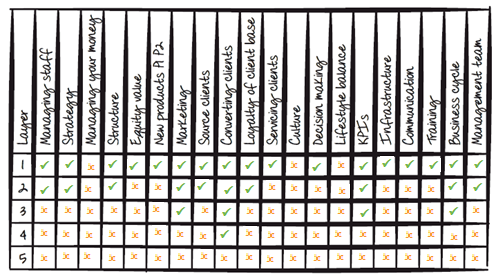
Better Filter: Capability
A few times a year I run a one-off strategy day for a business that just wants that guidance (ie, not the strategic project support which is the bulk of my business).
In these cases, I normally tell them to leave the to do lists at home. Instead we run what we call a Capability Scorecard – examining their organisation across 20 key areas of business.
Introducing Capability
“Capability” is the term that we in the Shirlaws diaspora use to describe the quality and skills of the management team of a business. This doesn’t mean the specific technical skills which are particular to your business, but rather the general skills required to run a business successfully.
Most businesses begin with an individual or partnership performing work that they enjoy and are good at. But being a qualified accountant, featured iOS programmer, or award-winning salesperson doesn’t equip us with the specific and varied skills necessary to successfully run a business.
We need to become experts in business, not just our trade or profession. And that extends beyond the owner, to your management team. So how capable are you and your team to grow your business? Do you have a tool to measure this over time, and to guide your January strategy day into a choice of strategic priorities?
As a strategic framework, the Capability Matrix provides a tool for evaluating the capability of your management team and to identify those areas which are your biggest opportunities. And briefly, it considers 2 dimensions:
- Width This is the range of skills you have, for example marketing, sales, decision making, managing staff and so on… and
- Depth of those skills, or how capable you are at that particular skill. Take two golfers with the same handicap, where one is an average all-rounder and the other (much like myself) is an ace putter who can’t wield a driver. The all-rounder is said to have “width”; the specialist in one particular skill is said to have “depth”. Your business’s capability is a combination of the two.
In a group situation, completing the Capability Scorecard normally takes an hour or so; and then another hour or so to agree on the most valuable priorities and get them rolling. It’s fast it’s focused and it creates a practical tool for making decisions today, communicating them tomorrow, and remembering them in the future.
A practical tool for making decisions today, communicating them tomorrow, and remembering them in the future.
(Another reason I love this tool? Like all of the incredible Shirlaws coaching intellectual property, once the client has done this day they can re-do the exercise themselves every quarter. And after a few tries, it can usually be completed in under 15 minutes in a style that can be immediately communicated to the whole business.)
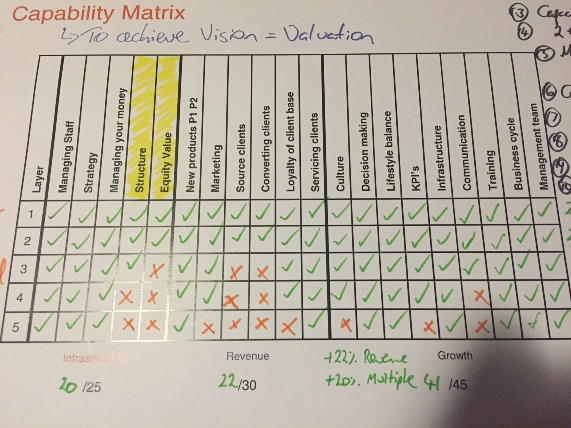
Collaborative Prioritising
Let’s talk common Strategy Day blunder number #2: Collaborative Prioritising. There’s a reason ‘Collaborative’ is often used to describe initiatives with high risk and low return. This is also known in strategy day facilitator circles as “Every Child Wins a Prize!”
A lot of Strategy Days are run with the focus that “Every Child Wins a Prize!”
Here’s how a lot of Strategy Days are run (including those run by many external facilitators! Sometimes an internal expert is best, just please recognise that you can’t facilitate AND participate so engage someone external to your team).
- All of the Partners or Leadership Team bring their ‘To Do’ list.
Maybe they’ve taken the time to review these beforehand, being sure to cross off the minutiae and add some important wish list stuff (new photocopier; expanding into China; etc). - On the day, everyone shares. Post-It Notes may be involved.
- If it’s an ‘offsite’ then the strategy retreat venue will give you a whiteboard or butchers’ paper and the facilitator will write all this down.
- You will all admire what a long and varied list it is. No wonder you were tired before Christmas.
- Then ALL of the stuff gets categorised into 3-5 buckets …
(You will all be impressed at the facilitator’s skills in doing so) - Which then get Prioritised …
- and lastly, Assigned. If you’re lucky, your new To Do list includes what you wanted; and last year’s priorities (which you didn’t do, because, you know, stuff) are now on someone else’s list or removed entirely.
Everyone leaves the day feeling super excited about the year ahead.
And (sometimes less than) two weeks later nobody remembers what their priorities were anymore. (Which is fine, because no-one is holding them accountable anyway.) How valuable and motivated do your team feel when all the highlights of the day give way to overwhelming to-do lists and a deja-vu sense that nothing is actually going to change as a result?
Congratulations, you just pissed in the pool.
Congratulations, you just pissed in the pool. Surprising, spontaneous and warm one moment; tepid, forgettable and dispiriting one moment later. Fast forward ten years, and you can see why many private enterprises are convinced that strategy days are a waste of time. Done this way, they are.

Simple as 3-4-5
To understand why this Collaborative Prioritisation ensures your annual strategy day is a waste of time, we need to take a step back in the journey of your business.
In fact, let’s take every step: Everything that happens in your business can be traced back to a decision you (or your fellow owners) made some time in the past. That decision was the source of the outcome you experienced. When you made that decision there was a reason behind it. That reason is what we call the Context of the decision.
- Jeff Bezos has a context of ‘Customer Satisfaction’
- Steve Jobs had a context of ‘Flawless Design’
- but sometimes we make a decision in a context of ‘Quick, because I’m hungry’ or ‘It won’t scale, but hack it for now’
To make the most valuable decisions in view of your strategy, you need to make sure you have a deliberate context for each element of your business (each of the 20 elements of the Capability Scorecard has a Contextual choice, for example). Once you have decided on your context, then you can communicate it to your staff, who will be able to apply that context themselves and make the ‘correct’ decisions without requiring your approval.
With Context, coloured Post-It Notes are no longer necessary to create team morale
Context provides clarity for making decisions. And Collaborative Prioritising like I’ve just described above is all about making decisions without addressing the Context.
Whenever you hear people say:
- I’m confused
- I’m overwhelmed
- We can’t choose
- There’s too much detail for me to process
- What do you think boss?
that’s a good indication your team are stuck in the day-to-day content without the overarching context to guide their activity.
If you think of the To Do List as Box 1 in the process, and the Priorities selected by the group as Box 2 … then it’s easy to see why you need to go to Box 3 – and understand the Context you are setting for the year ahead.
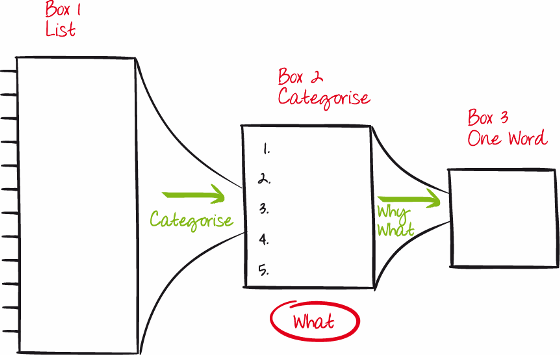
So here perhaps is the most powerful question of this longform guide to great strategy days: Have you set your Context for the year?
You will see the challenge is to distil this into One Word. A One Word helicopter to transport you from ‘working in the business’ to a 10,000 feet view; a One Word treasure map to guide your team, even in your absence; a One Word philosopher’s stone which will turn Box 2 Plumbum into Box 4 Gold.
Have you set your Context for the Year?
On a strategy day – whether it’s your whole team, your leadership team, or your Board – aligning everyone to this Context is going to be challenging. It is so, so easy to skip this step or fast-track this step – to complete it intellectually (“Just say Growth and move on!”) rather than taking the time to really get to the source issue or desire. Let me tell you this: that’s a tactic that will save you an hour and waste you an entire year designing and executing the wrong strategy.
Your Context for the year is your new starting point. Based on that (some examples from recent strategy days I’ve run: Lifestyle; Security; Platform; Empower) you and your team can now select the 3 strategic priorities that will move you towards the intention you have selected. Write those priorities in Box 4 (and in Box 5 list the specific actions for each Strategy, so you end the day with practical and valuable next steps).
From my experience, the Box 4 priorities are rarely the same as those in Box 2. And if Box 4 are the most valuable choices based on your source Context … then by definition the ideas developed using Collaborative Prioritising (just like every other strategy session) must have been off the money.
Wondering why previous annual strategy days only created incremental growth for your business? Chances are Box 2 looked good enough when you really could have pushed your team to achieve more.
In January 2015 … I hope you push yourself and your team to achieve more. Instead of SWOT Analysis, brain dumps, and “Every Child Wins a Prize” ask yourself the tough questions. What do we really want to achieve this year? Why are we in business? What is our genuine strategic capability? And based on this, what is the best use of our valuable strategic time?
Why are we in Business? What is the best use of our valuable strategic time?
Still Stuck?
I love my global readers, and this is why I have built my network of experts all around the world. When it comes to business guidance and strategy, these guys and gals are the best of the best at helping private enterprise at all stages of their journey: Start Up, Scale Up, Step Up, or Sell Up.
Just like the Box 3 step above (where you can waste a year trying to save an hour), when it comes to your annual strategy day don’t cost yourself millions trying to save 10 grand.
It’s never too late to start a conversation with me –
jacob@jacobaldridge.com or +61 427 151 181, and I’ll be happy to:
- grab a coffee and explain these concepts more fully
- connect you with the best advisor based on your industry and global geography
- or discuss how my team and myself may be able to help.
Your Reward – Template Strategy Agenda
For making it this far, let me give you a reward. Click here to take the Business Freedom diagnostic quiz, to help identify how ready you are for change in your business … or pinpoint those areas where improvement will deliver actual results.
I know some of you just need one more piece of information to make a real difference; and if I give away some of my expertise to help a range of businesses run great annual strategy days then everybody wins.
Good luck, and good strategy, whatever your context for 2015 [UPDATE: and for 2016] [UPDATE: and for 2017 of course][Oh Hi Everyone: Reading this for the 2025 Financial Year].
If you’re Dustin Curtis, you should follow me on Twitter here.
And if you’ve ever experienced a bad strategy day, please share this with your friends and colleagues: The painful strategy session you save just might be your own
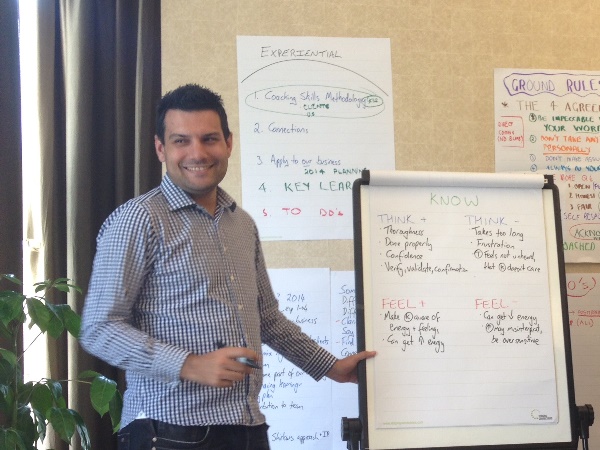




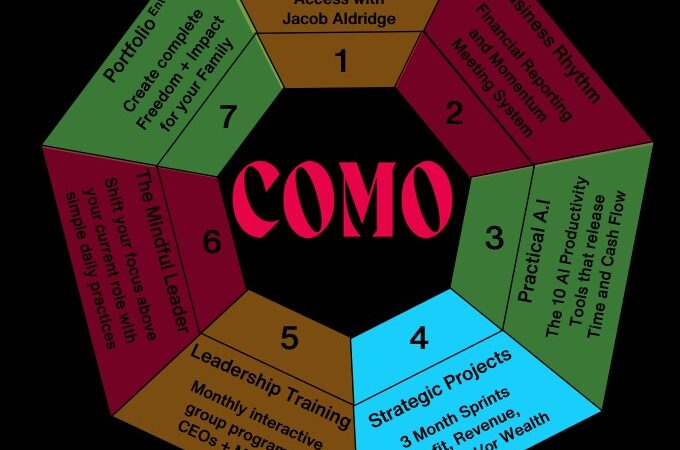
[…] https://jacobaldridge.com/business/your-january-strategy-day-facilitator-swot-analysis-is-a-waste-of-… […]
[…] Startup article found at: https://jacobaldridge.com/business/your-january-strategy-day-facilitator-swot-analysis-is-a-waste-of-… […]
[…] example, some criticise the SWOT and offer an alternative that looks at capabilities across 20 variables. Others say the SWOT analysis is unable to adapt to the complexity and rate of change, defining […]
[…] discussed the Capability Matrix in more detail in this article. It’s transferable into any business for the ownership and leadership levels – and you […]
[…] the beginning of 2016, I ran my own business through this annual strategy day agenda. What became clear … was how confused I was, and the negative impact this had had on my […]
[…] I undertook my January Strategy Day this year, my key Context was FREEDOM. As I explain the elements of my Vision, this will become […]
[…] course, most businesses do them poorly (as I wrote about in 2015) – or almost as bad, not at all, preferring to leave strategy and engagement to the confines […]
[…] Doing a SWOT analysis. I’ve ranted about SWOT enough, but essentially understanding your business today is not the same as planning for its future; […]
[…] a SWOT analysis. I’ve ranted about SWOT enough, but essentially understanding your business today is not the same as planning for its […]
[…] a SWOT analysis. I’ve ranted about SWOT enough, but essentially understanding your business today is not the same as planning for its […]
[…] Doing a SWOT analysis. I’ve ranted about SWOT enough, but essentially understanding your business today is not the same as planning for its future; […]